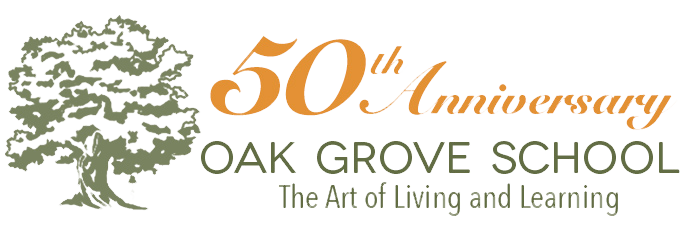 https://ogs-main.s3.us-west-1.amazonaws.com/wp-content/uploads/50th-Anniversary-Featured.jpg
419
800
Ollie
https://ogs-main.s3.us-west-1.amazonaws.com/wp-content/uploads/Oak-Grove-School_50th-logo.png
Ollie2025-09-04 13:44:472025-09-04 15:32:0150th Anniversary Weekend
https://ogs-main.s3.us-west-1.amazonaws.com/wp-content/uploads/50th-Anniversary-Featured.jpg
419
800
Ollie
https://ogs-main.s3.us-west-1.amazonaws.com/wp-content/uploads/Oak-Grove-School_50th-logo.png
Ollie2025-09-04 13:44:472025-09-04 15:32:0150th Anniversary WeekendA Message from Head of School Jodi Grass
Often, people visit Oak Grove School for the first time and share a feeling of peacefulness, of oneness, of familiarity. Some describe this feeling as sacred – immeasurable. I have.
The opening line of the Intent of the School shared by our Founder in 1975 reads, “It is becoming more and more important in a world that is destructive and degenerating that there should be a place, an oasis, where one can learn a way of living that is whole, sane, and intelligent.”
Krishnamurti emphasized that these schools were not meant to conform to traditional systems, but to nurture freedom, intelligence, and goodness in young people – qualities that he saw as vital to healing a broken world.
Certainly, this is a place where the human-made buildings look as though they have grown out of the ground, “so as not to be an imposition to the land.” Certainly, this is a place where the children are seen and known, a place where adults and children ask meaningful questions together and individually without the limits of an answer. Certainly, this is a place where functional knowledge is celebrated and delved into deeply, while simultaneously, knowledge of oneself, the knowledge within, is explored. A place where competition, praise, and comparison are limited. But is this an oasis?
This place has conflict, conflict among students, students and teachers, parents and teachers, administrators, and all of the above. There are times when the campus has been dried by the scorching sun, lacks water, and is overrun with weeds; when the campus has been surrounded by black smoke, the deafening sound of roaring flames jumbled with screeching sirens, and covered in toxic ash. Students can look tired and stressed. Sometimes there is an expulsion, a trauma, or a death within the community when entropy casts a heavy blanket of grief, loss, and confusion among us. Can there be conflict in an oasis?
Perhaps Krishnamurti’s metaphorical use of the word “oasis” is chosen to describe a state of inner peace. He suggests that finding this “oasis” involves observing the world without judgment, understanding one’s own thoughts and emotions, and becoming aware of the self–biases, triggers, conditioning – which can perhaps lead to a sense of inner freedom, an oasis.
On a clear, blue-skied, temperate day, the sound of children laughing, a soaring red-tailed hawk above our heads, surrounded by whole-hearted and devoted adults, the majestic oaks standing competently amongst us, one might feel as if this place is an oasis.




